People
Suhanya Raffel and Doryun Chong Explain How M+ Will Fill Hong Kong’s Curatorial Void
A new major cultural institution prepares to shake up Hong Kong's art scene.
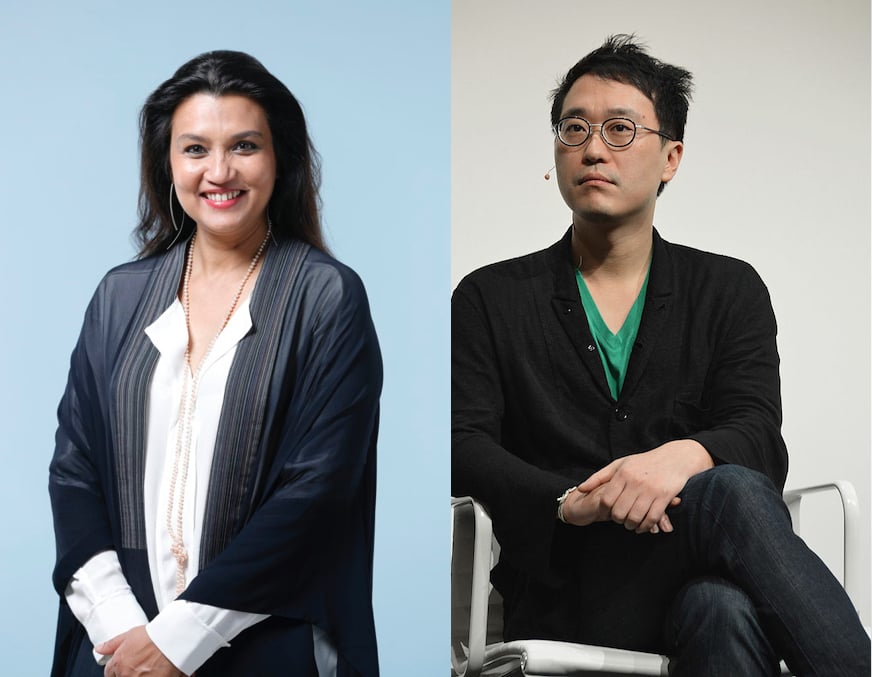
A new major cultural institution prepares to shake up Hong Kong's art scene.

Henri Neuendorf

Hong Kong’s M+ museum, part of the city-state’s ambitious $2 billion West Kowloon Cultural District, is beginning to take shape.
Encompassing design, architecture, moving image, and visual art, the museum will provide the region with a much needed academic foundation to tether to its growing significance as an art marketplace. Whilst the vast 213,000-square-foot Herzog & de Meuron-designed building is still under construction, the collection is already taking shape and currently encompasses over 6,000 objects. Spanning from postwar to contemporary art, the collection has a strong local focus, with 26 percent of objects coming from Hong Kong art makers, and a greater proportion from the wider Asia Pacific region.
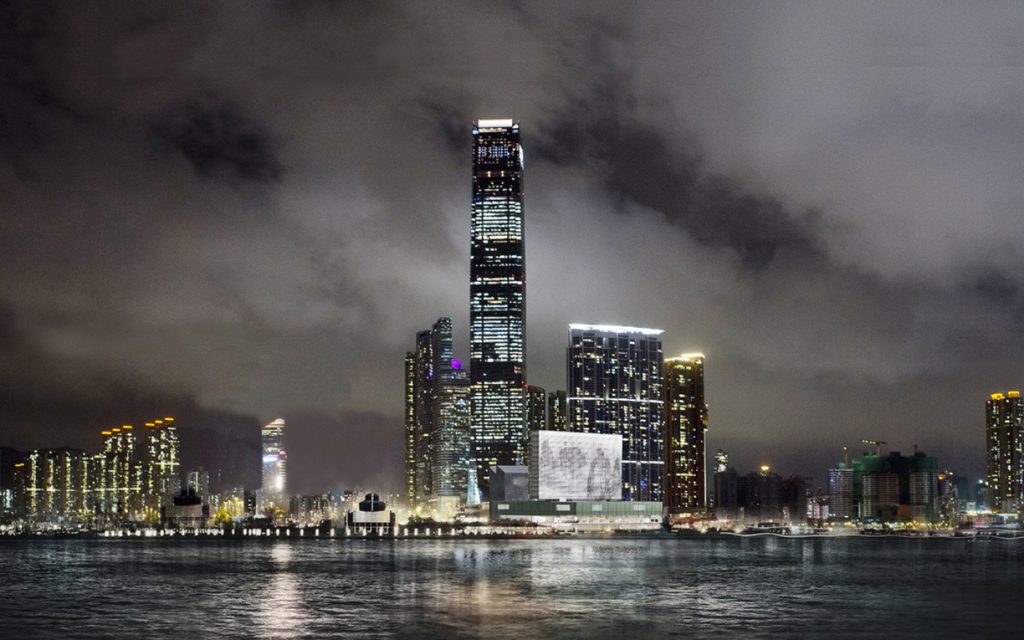
M+ museum rendering. Photo: Herzog & de Meuron, courtesy of West Kowloon Cultural District Authority.
At a press conference coinciding with Art Basel in Hong Kong, artnet News spoke to M+ executive director Suhanya Raffel and chief curator Doryun Chong about the Hong Kong art scene and the future of the museum against the backdrop of increasing political tension between Hong Kong and Beijing.
What makes the art scene in Hong Kong unique and different compared to other art centers such as New York, London, or Berlin?
Suhanya Raffel: Oh, the fact that it’s in Asia. That there are a huge number of Hong Kong, Chinese, Japanese, South East Asian artists showing at the fair. It’s the character of this region and it’s diverse. It’s great to see a different expression here.
Doryun Chong: It’s at a very exciting moment. It’s getting more diverse by the minute and it’s really growing at all levels of ecology. That was a huge part of the motivation for me to move here because you could really see this is a scene, which I think admittedly has been rather small, but is going through these explosive growth spurts.
Again, Art Basel in Hong Kong has helped tremendously. Other institutions that have been here really upping their game with bigger ambitions has also helped. Galleries from outside of Hong Kong setting up shop here has also helped, and local galleries are also growing and emerging. And, of course, we play a very important role here as well. But the sense is that we really feel like we’re all in it together to build a new cultural hub. It’s very collegial, sort of family-like atmosphere.
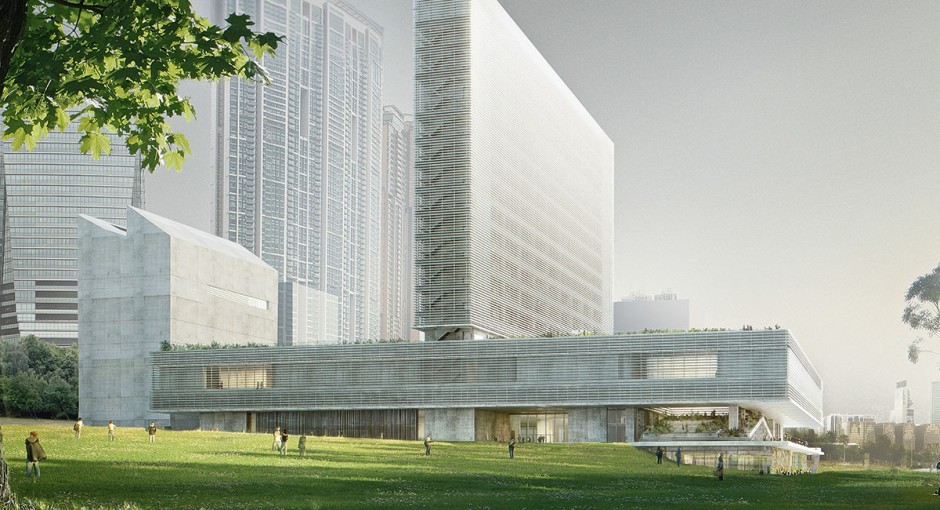
Rendering of the M+ museum. Courtesy of West Kowloon Cultural District Authority.
What’s missing from the Hong Kong art scene that will raise it to the level of art centers such as New York, London, or Berlin in terms of cultural infrastructure?
SR: It needs to develop those big pieces of cultural infrastructure that are not market driven per se, but that are about museums and theaters and that kind of infrastructure. At this point, that infrastructure is there but in a very nascent form, and this big push to develop the West Kowloon district addresses that.
How will the West Kowloon culture district, and specifically the M+ museum, shape the future of the Hong Kong arts scene?
SR: I think it will be phenomenal. It will be groundbreaking and it will change the landscape in Hong Kong, I’m certain of it. On one hand, it will make sure that Hong Kong artists and designers and architects and makers are seen with their global colleagues. The international framework is something that M+ will be delivering to Hong Kong, as well as bringing major international contemporary regional culture to Hong Kong.
What is the greatest misconception about the art scene in Hong Kong?
SR: I would much rather say the opposite. It’s very energetic arts scene. Incredibly developed non-for-profit artist scene here. There’s an impressive art market. What we need to develop is the museum end of that. So that is what is happening now.
In terms of the collection of the M+, where does the focus lie presently and how well it continue to expand in the future?
SR: It’s a very clear collection direction. It’s a collection of visual culture. That being visual art, moving image, design, and architecture of the 21st century and back into the mid-20th century. So it’s a modern and contemporary collection.
DC: The focus of the M+ collection, chronologically speaking, is a contemporary collection. It starts from roughly the 1950s to the present. There are some works that fall outside of that, meaning that they come from the first half of the 20th century. It is a global collection, but we really start from where we are, which is Hong Kong and then mainland China. We are trying to achieve the globalness of the collection, not by really reaching out to all corners of the earth, but really trying to build a very broad collection across Asia, including East Asia, Southeast Asia, and South Asia. It’s not a collection of fine art only.
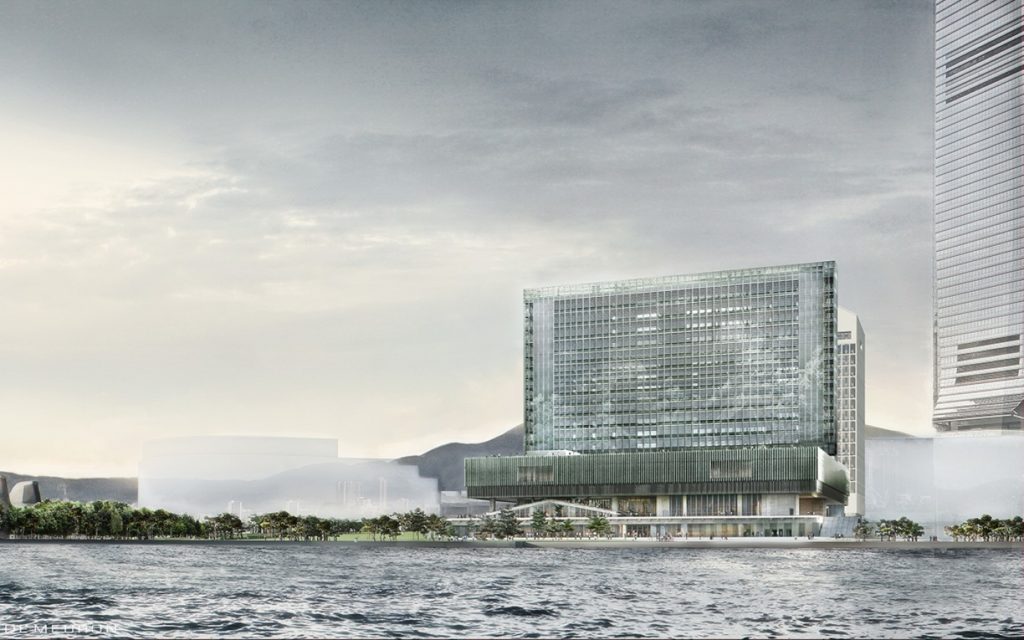
M+ museum rendering. Photo: Herzog & de Meuron, courtesy of West Kowloon Cultural District Authority.
Who is the target audience of this collection? Who will this museum serve?
DC: I think any serious museum has to have the local community as its first target audience. So that’s first and foremost. Hong Kong has traditionally always been a very open international city. And then we will be very much open to our neighbors, as well as international audiences.
There is a very large population in mainland in China. If you’re just looking at Pearl River Delta, within two hours of travel time, then you have 100 million people. So that is a huge potential audience, and Hong Kong has always been a traditional hub as well in terms of flights. So within three hours, you can get to Seoul and Tokyo and Calcutta. So there is really a wide range of groups and communities that are groomed to be ready audiences. With something like Art Basel in Hong Kong happening every year, we have very, very large international community already forming.
To what extent will the changing political situation and the growing influence of Beijing constrain your independence as an institution?
SR: It has had no issues to date and we continue to make our programs as we see fit, curatorial independence is essential to the work of M+. Indeed, we’ve got a governance structure to support that with it’s own M+ board, and the sub-structure of an acquisition committee as part of the M+ board. The structure is now globally compatible with other institutions in the world.
DC: Well we don’t make the assumption that there are constraints. I think obviously political conditions and situations are evolving in every part of the world. In fact, I think we’re living through a very interesting time where the changes that were completely unexpected are happening in not just in Hong Kong and China, I mean it’s really everywhere, isn’t it?
I think there is a widespread perception that censorship is everywhere. I do think that it is an issue that cultural outlets always have to contend with, but I think they often do it in very smart and creative ways. But Hong Kong is also very different from mainland China, the freedom of expression, the freedom of press are guaranteed by the basic law, which is the constitution. I’m not going to paper over some of the controversies that happened in recent months, and people are concerned and spooked by it, but again, it’s something that you have to negotiate and roll with. But I have to emphasize that this has not affected us at all so far, and I don’t expect that it’s going to be any serious issue in the near future.
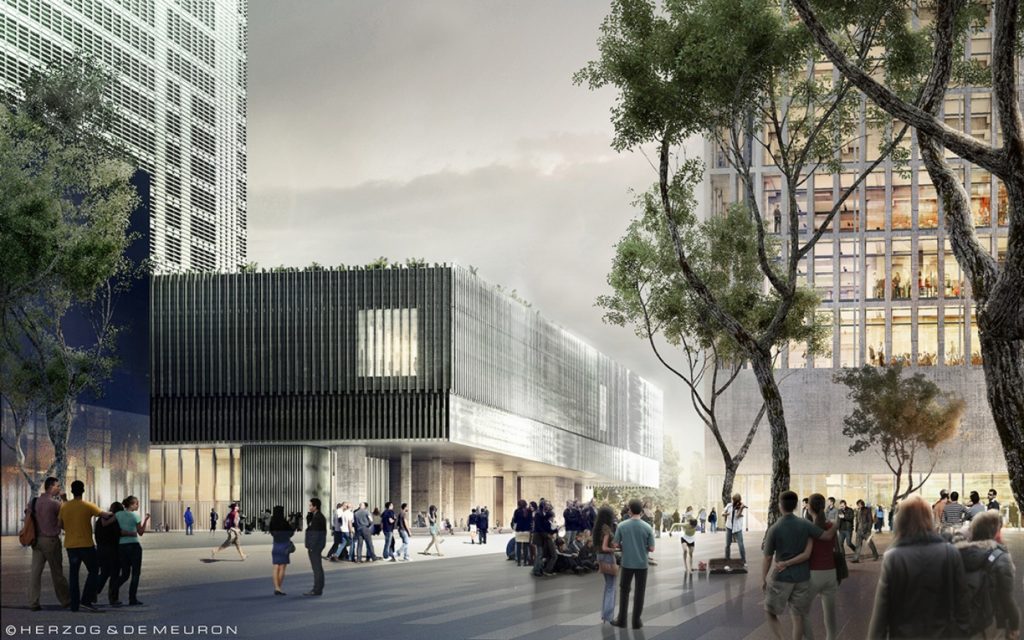
M+ museum rendering. Photo: Herzog & de Meuron, courtesy of West Kowloon Cultural District Authority/
Do you think that M+ has responsibility to respond to these developments and how will the museum respond to the political situation?
DC: I think that the biggest responsibility that we have is to build a proper museum of international standards. I don’t believe in political provocation for the sake of political provocation. We have a big responsibility to be a proper cultural institution. I’m not naive to think that culture and politics are not related. Of course they are related. But then we’re not here to be a partisan organization. Our colleagues in New York and London would say the same thing.